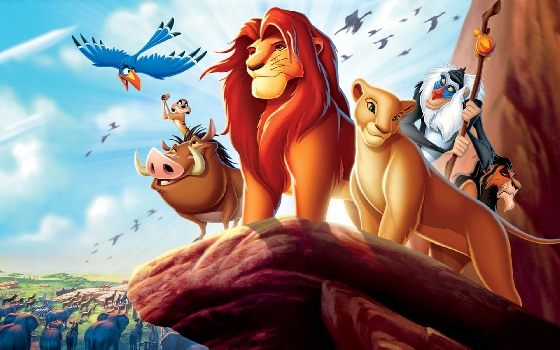By Emma Zaremba
Features Assignment Editor
Disney’s great, stop the hate.
A pro-life lobbying group (American Life League) criticized the Disney Company in 1995 of their supposed subliminal messages hidden in a variety of their films, according to Subliminal TV. Numerous critics have made jokes about the inappropriate messages and imagery, so people believe it to be true based on the information provided by the Internet.
It’s common for Disney critics to pick on classics such as “The Rescuers,” “The Little Mermaid,” “Aladdin” and “The Lion King,” because of certain discrepancies, but there’s no reason for it.
Wow Museum claims there is a scene in “The Rescuers” where Bernard and Bianca, the film’s mice heroes, are “sitting in a sardine can passenger seat on the back of the transporter bird, Orville, and as they fly past a brick building you can see a naked woman standing in front of an open window.” After this realization, Disney officials recalled 3.4 million copies of the video to fix the issue.
These offending images were later removed from VHS and DVDs because Disney saw that a quick fix was necessary for the film to be deemed appropriate. It’s ironic that critics focus on small details such as these for movies that are targeted toward a younger age group. While it’s a family-based company, Disney films thrive because of the world’s youth. Kids don’t pay attention to the background; they are too busy being enthralled with the main characters.
This pro-life group and all the haters since selected a minor mishap in the early version of “The Rescuers” and exaggerated it. They based an entire theory on the idea that Disney purposely hides crude messages in their films.
Another popular criticism is that the word “sex” is hidden in a scene of “The Lion King.” When Simba, the film’s leonine protagonist, heads to the cliff top to communicate with his father’s spirit, he lays down on a bed of flowers that float into the sky. Conspiracy theorists believe that these flowers take the form of those three letters.
Feed Buzz said “the letters are only visible for a brief moment, but one look at a freeze-frame and it’s almost too obvious.”
What’s too obvious is that these theorists are only seeing what they want to see to strengthen their case. Disney would have a different image if their goal was to instill sex in the minds of young children. Likewise, if this message was seen among parents around the world, the entire industry wouldn’t consistently be raking in millions.
In “Aladdin,” the most famous subliminal message occurs in the balcony scene where the disguised Aladdin visits Princess Jasmine to try and charm her.
Aladdin responds to Raja’s, the tiger’s, attack by saying: “Come on… good kitty, take off and go…” however the dialogue is slightly muffled, according to Yahoo. Many people claim that what Aladdin is really saying is “Good teenagers, take off your clothes.”
The offending phrase was replaced with “down, kitty” in the DVD release. Once again, this illustrates how certain people make a stink out of something that isn’t even there, for the script doesn’t show Aladdin saying anything along the lines of “take off your clothes,” according to the same article.
Another well-known sexual message can supposedly be found in “The Little Mermaid.”
On the poster of the film with Eric and Ariel in the foreground and Ariel’s castle in the background, “a phallic figure is really obvious to someone not out to put forth a Disney conspiracy theory,” according to Wow Museum.
Apparently, the front of the castle displays an inappropriate figure on its front, so theorists use that as evidence against Disney. These critics have no case. It’s easy for one person to declare that they’ve seen something and to have others believe it. People love controversy.
While critics have attacked Disney films on theoretical discrepancies, there’s solid evidence that Disney responded to each of these complaints to keep their consumers happy, regardless of their ridiculous statements. That’s what Disney’s institution is built on.
Convincing others to see images and believe the Disney Company is some undercover cohort trying to pervert the minds of children is simple, as are the minds of those who actually trust it.
zarembek11@bonaventure.edu







